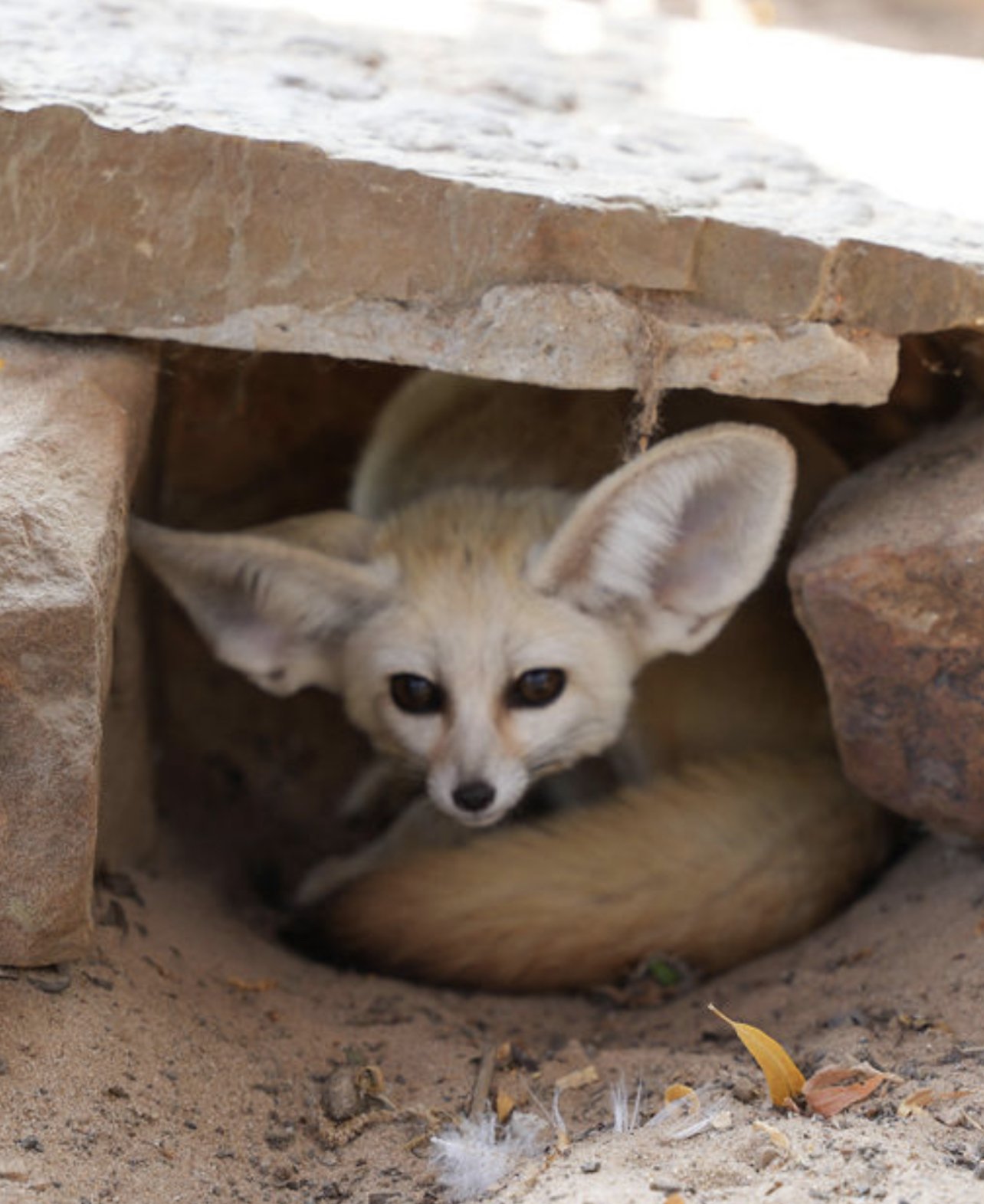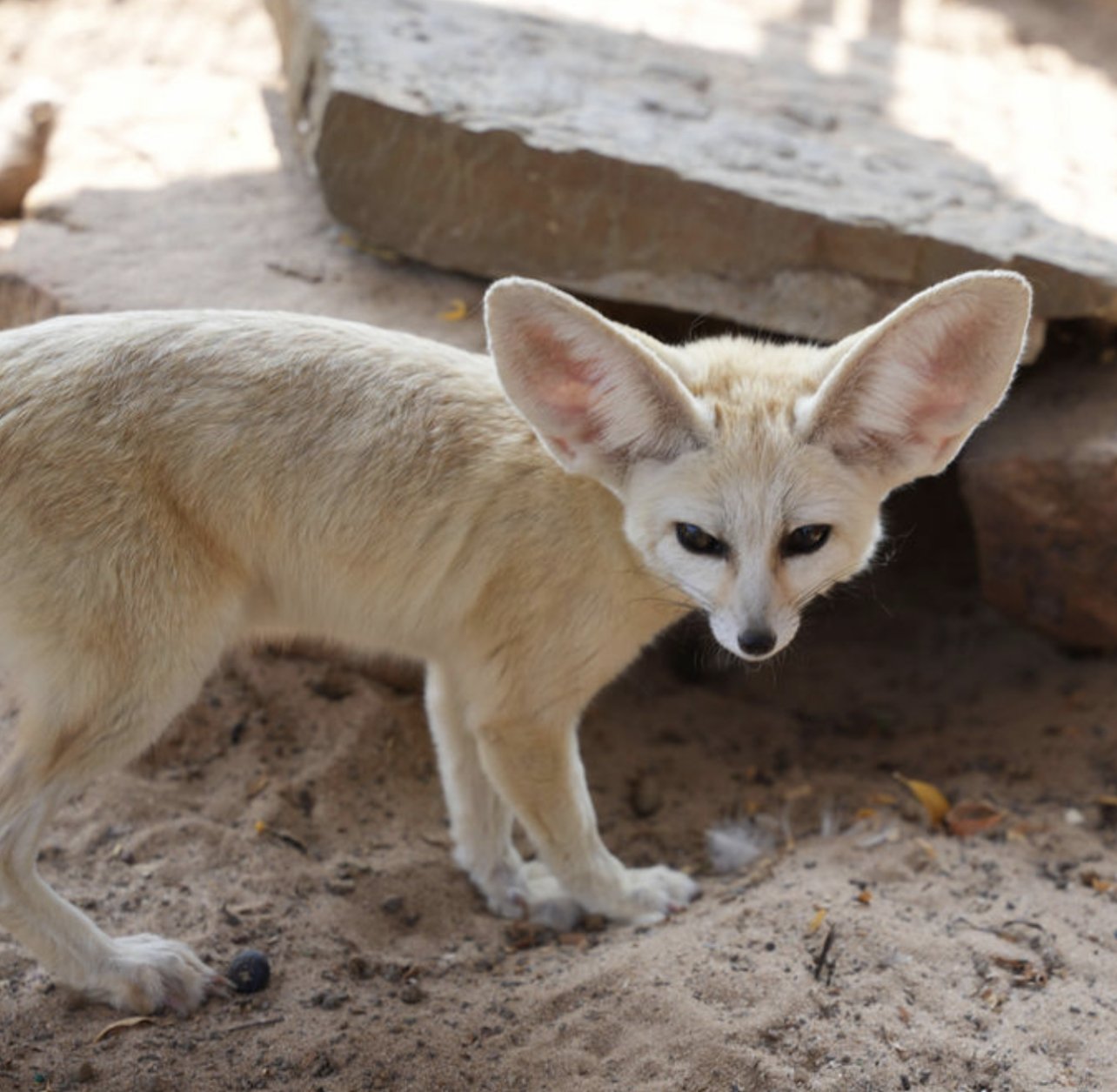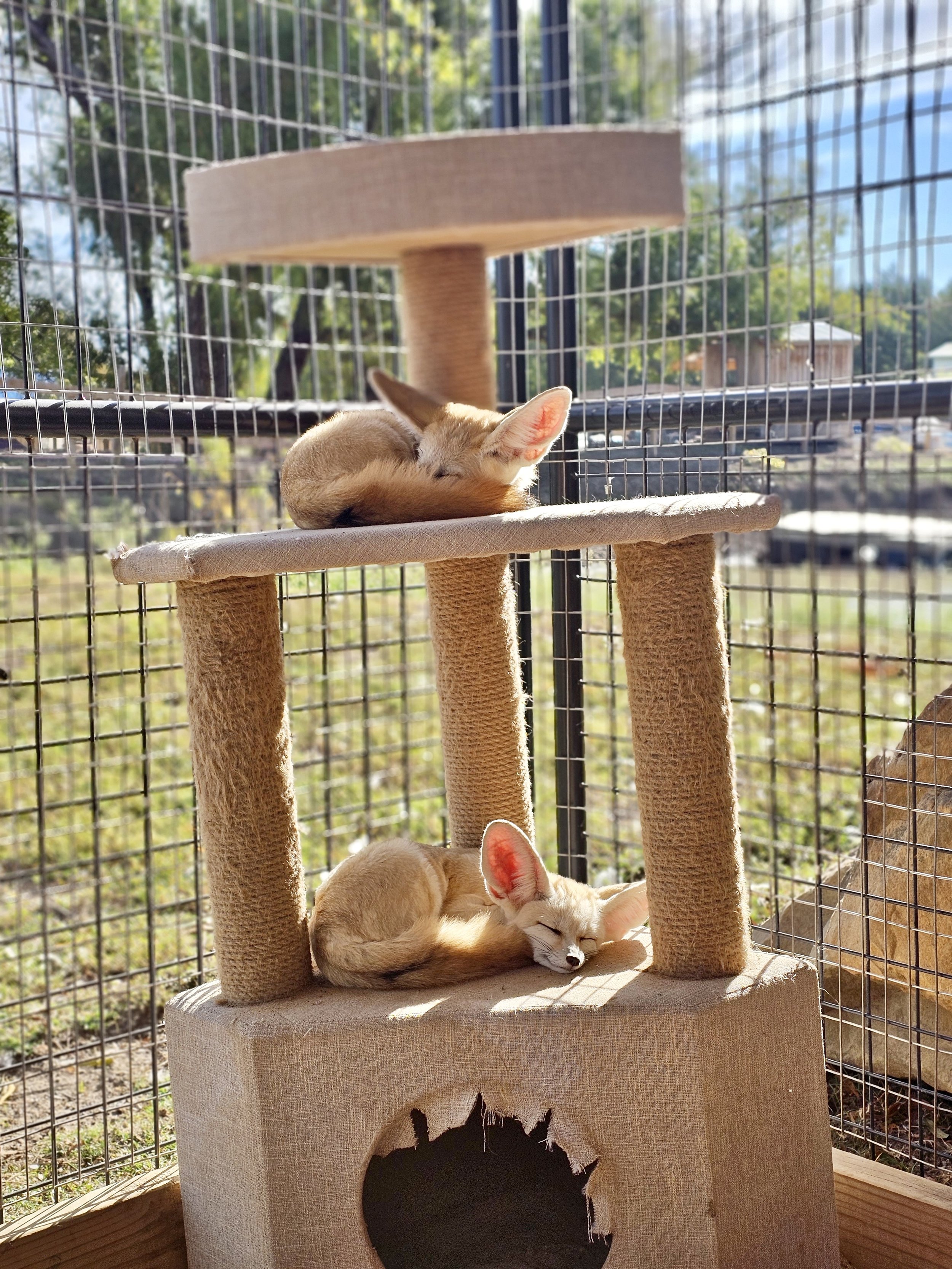Meet Felix & Flossy
Fennec fox Cathy’s Critters Educational farm
1. The fennec fox (Vulpes zerda) is the smallest fox species, with distinctive large ears relative to its body size.
2. Found in the Sahara Desert and parts of North Africa, the fennec fox is adapted to arid environments.
3. Those large ears help dissipate heat and are sensitive to detect prey and predators.
Fennec fox Cathy’s Critters Educational farm
4. Fennec foxes are nocturnal, mainly active during the cooler night hours to avoid the desert's extreme daytime temperatures.
5. They have a keen sense of hearing and can locate prey, such as insects and small rodents, beneath the sand.
6. Fennec foxes have fur on their feet, providing insulation against the hot desert sand.
7. Their diet includes a variety of foods, ranging from insects and small mammals to fruits and vegetation.
8. Fennec foxes are skilled diggers, creating burrows to escape the desert heat and predators.
9. Their fur is pale in color, helping reflect sunlight during the day and retain heat during the colder nights.
Fennec fox Cathy’s Critters Educational farm
10. Fennec foxes are known for their playful behavior, engaging in social interactions and games.
11. In captivity, they can live up to 14 years, while their lifespan in the wild is generally shorter due to predators and harsh conditions.
12. Fennec foxes are sometimes kept as exotic pets, but they require specialized care and attention.
13. The fennec fox is classified as a "least concern" species in terms of conservation status.
14. They communicate using a variety of vocalizations, including barks, squeaks, and purrs.
15. Fennec foxes are well-adapted to conserve water, obtaining much of their hydration from their food.
16. Their kidneys are efficient at concentrating urine, allowing them to survive in water-scarce environments.
17. The fennec fox's thick fur coat acts as insulation, protecting them from both extreme heat and cold.
18. Unlike some other fox species, fennec foxes are not known for aggressive behavior.
19. These foxes often live in family groups, consisting of a mating pair and their offspring.
20. Fennec foxes have been featured in various cultural representations, including folklore and popular media, due to their distinctive appearance.




